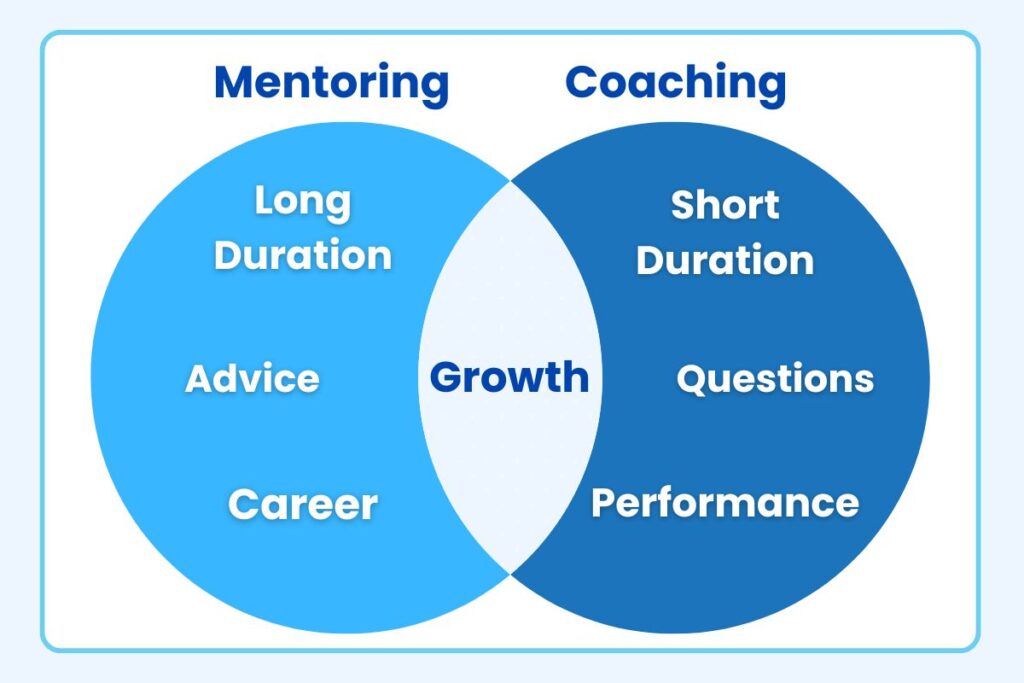Mentoring Tomorrow’s Leaders: How to Develop Talent from Within
“The function of leadership is to produce more leaders, not more followers.” — Ralph Nader
Introduction: Great Leaders Build Other Leaders
Strong leadership isn’t just about driving results – it’s about developing people. The most impactful leaders understand that their true legacy lies not in the projects they complete, but in the people they empower to lead after them.
In today’s fast-paced, ever-changing work environment, organizations can’t afford to rely solely on outside hires to fill leadership roles. Building a strong internal leadership pipeline is not only more sustainable – it’s more strategic.
That’s why developing the next generation of leaders must be a priority, not an afterthought. This week’s blog explores how to identify leadership potential within your team and how to use mentoring and coaching to help that potential flourish.
Mentoring vs. Coaching: What’s the Difference?
Although the terms are often used interchangeably, mentoring and coaching serve different (but complementary) purposes in leadership development:

🔹 Mentoring is about long-term development. It focuses on growth, mindset, and broader career goals. It’s typically more relational and holistic.
🔹 Coaching is more performance-focused. It helps individuals build specific skills, overcome short-term obstacles, and improve in targeted areas.
A good leader knows when to mentor and when to coach – and often does both.
💡 Example: You may mentor a team member as they explore future leadership roles and their long-term career path, while coaching them on improving their delegation skills for a current project.
How to Spot Leadership Potential in Your Team
Identifying future leaders isn’t about who’s loudest in the room or who delivers the most dazzling results. True leadership potential often shows up in subtle, consistent behaviors:
- Curiosity and a hunger to learn – They ask thoughtful questions and seek feedback.
- Ownership and accountability – They follow through, take responsibility, and admit when they’re wrong.
- Emotional intelligence – They can read the room, manage their emotions, and relate well to others.
- A desire to serve – They support others and look for ways to make the team better.

Don’t overlook the quiet contributors or emerging voices. Leadership potential doesn’t always show up with fanfare – but it’s there, waiting to be nurtured.
Five Ways to Develop Future Leaders

Once you’ve identified leadership potential, the next step is intentional development. Here’s how to cultivate your future leaders through mentoring and coaching:
1. Model the Leadership You Want to See
Leadership starts with you. Your future leaders are watching how you communicate, make decisions, handle setbacks, and treat people.
Be transparent, show humility, and lead with integrity. When you walk the talk, you teach through your example.
2. Have Intentional Development Conversations
Talk regularly with your team about their goals, interests, and development areas. Don’t wait for performance reviews – make growth a consistent part of the conversation.
Ask questions like:
- What kind of leader do you want to become?
- What strengths are you most proud of?
- What skills would you like to grow next?
These conversations build trust, encourage ownership, and lay the groundwork for effective mentoring and coaching.
3. Create Stretch Opportunities
Give high-potential employees chances to lead, even in small ways.
- Let them run a meeting
- Lead a small project
- Mentor a new hire
- Represent the team in a cross-functional group
Stretch opportunities help them practice leadership in real-world settings and grow their confidence along the way.
4. Deliver Growth-Focused Feedback
Leadership development requires frequent, constructive feedback – not just when things go wrong.
- Use feedback models like SBI or Pendleton to frame your message clearly.
- Balance challenge with encouragement.
- Focus on behaviors and impact – not personal traits.
Your goal is to help them grow, not grade their performance.
5. Encourage External Mentoring or Peer Learning
Sometimes, the best leadership insights come from outside the immediate team.
- Connect your future leaders with mentors in other departments.
- Support attendance at leadership workshops or peer roundtables.
- Encourage reading, reflection, and self-directed learning.
Exposure to different perspectives helps them develop breadth and depth in their leadership style.
📥 Leadership Growth Planner
To help your team members take ownership of their leadership journey, I’ve created a free tool:
This downloadable worksheet will help your team:
✔ Reflect on their leadership goals
✔ Identify development opportunities
✔ Track mentoring and coaching progress
✔ Create an actionable leadership growth plan

Final Thoughts: Your Legacy is the Leaders You Build
The most impactful leaders don’t just lead projects – they develop people. By mentoring and coaching intentionally, you can help your team grow in confidence, competence, and character.

So, who are you mentoring right now?
Who could you start coaching next week?
What small leadership opportunity could you hand off tomorrow?
Be the leader who builds more leaders. That’s the kind of legacy that lasts.